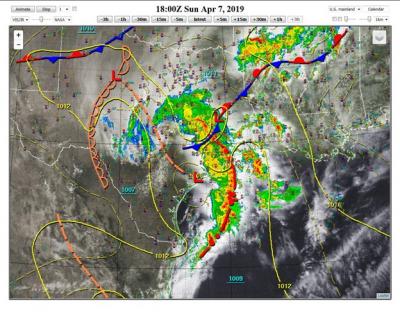New Cloud Microphysics Improves the Simulation of Mesoscale Convective Systems
Mesoscale convective systems (MCSs) play an important role in regulating global radiation and the hydrological cycle. However, global climate models (GCMs) have had problems simulating MCSs. Cloud microphysics can affect MCS organization (e.g., through latent heating, cold pool, etc.) and is one of the most poorly represented types of physics in GCMs. Researchers found that improving the representations of cloud microphysics processes reduces model bias in simulating MCSs. Compared to the original microphysics scheme, the physically advanced ice microphysics in the new scheme improves the simulation of MCS precipitation and produces more realistic occurrences of heavy precipitation rates.
These results provide a scientific justification for employing a more physical cloud microphysics scheme in future versions of the Energy Exascale Earth System Model (E3SM). The improved model performance demonstrates the importance of realistic approximation of ice microphysical processes. As GCM resolution continues to increase, more convective processes and clouds will be resolved. The role of cloud microphysics will continue to become more important for simulating MCSs.
MCSs are large storms that play an important role in regulating precipitation and climate globally. They are difficult to simulate in global climate models because of the inaccurate physics parameterizations and coarse resolution typical of GCMs. The regionally refined model (RRM) approach allows high-resolution regional simulations to be embedded in a coarse-resolution global model, enabling the simulation of MCSs. How models represent small-scale cloud microphysical processes affects their projections of MCS precipitation. A relatively new cloud microphysics scheme—Predicted Particle Properties (P3)—was modified and implemented into E3SM. Researchers examined how cloud microphysics parameterizations influence MCS simulations over the contiguous United States using the RRM framework. They showed that the P3 scheme notably improves the simulation of precipitation, particularly MCS precipitation. The improvement mainly stems from the improved ice microphysics representations in P3, which help produce more realistic heavy precipitation rates.

